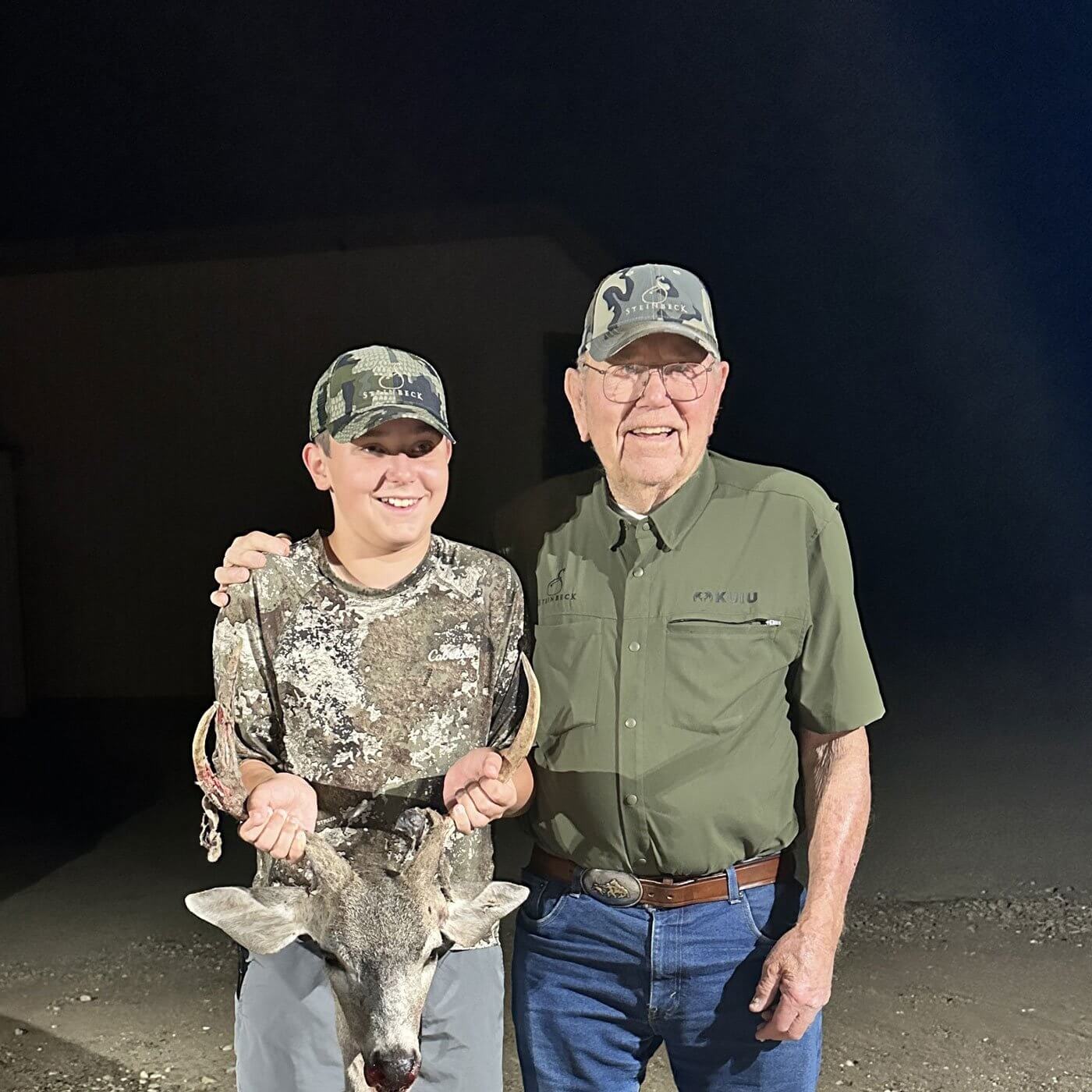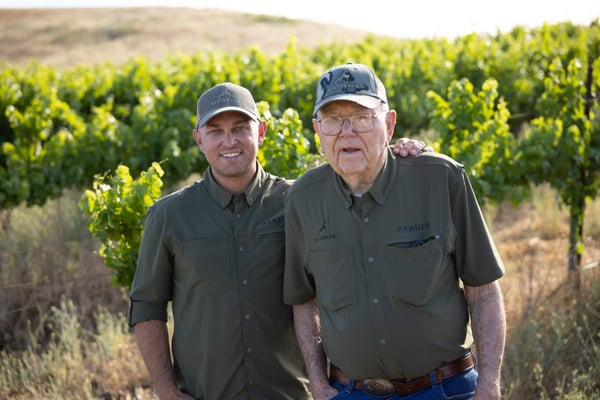- Savage Blog
- Just a .243: A Steinbeck Family Heritage | Savage Journeys
Just a .243: A Steinbeck Family Heritage | Savage Journeys
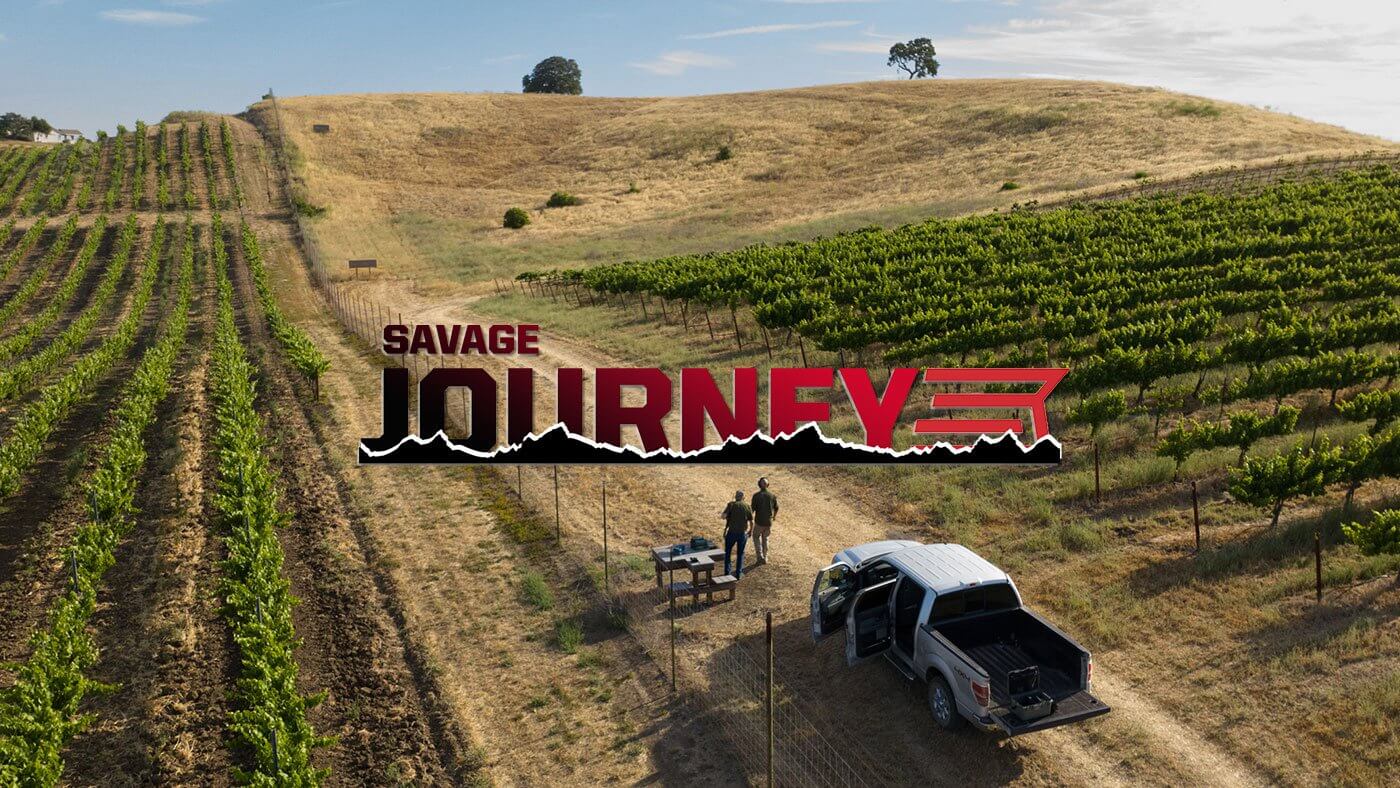
“Ryan, this is going to be my last deer. When the hunt is over, I want to give Bradley my rifle. Please be ready with a camera.” My breath caught in my throat as tears threatened. My best hunting buddy, my mentor, my grandpa, was ending his journey as a hunter on his terms…sort of.
When you shake Howie Steinbeck’s hand, it’s immediately apparent how he achieved his success. A lifetime of farming is reflected in the cracked, calloused, almost jarringly powerful hands. They’ve been used hard. His body is no different. Chronic pain from numerous injuries and accumulated strain had him moving a little slower, but in his 84th year, nothing could match his passion, grit, and determination. Up before the sun and ready to help however he could on the family farm was the daily routine.
In 1960, Howie and his new bride, Bev, returned from their honeymoon to a home that had been burglarized. His guns were among the missing items. With deer season approaching, he headed to our local gun store, Bridge Sportsman’s Center, to see if they had something suitable. He’s right-handed but left eye dominant, so options, especially then, were limited. Fortunately, a left-handed version of the recently introduced Savage Model 110 in .243 Winchester was sitting on the shelf. Times were different, and proprietor Norm Bridge allowed Howie to take it home and try it before committing. Satisfied with the 1” groups he was able to produce (with open sights!), he signed on the dotted line, and what can only be described as a decades-long partnership commenced.
The Savage Model 110 was released in 1958. Its iconic name comes from its sale price when it was first introduced of $109.95. The 110 was not only affordable and accurate, but it was also the first commercially produced left-handed rifle action available on the market. While some updates have been made over the years, including the introduction of Savage's revolutionary AccuTrigger system in 2003, the Model 110 has remained the longest continually produced rifle action. Today, there are millions of 110s that have been trusted by generations of hunters and sport shooters around the world.
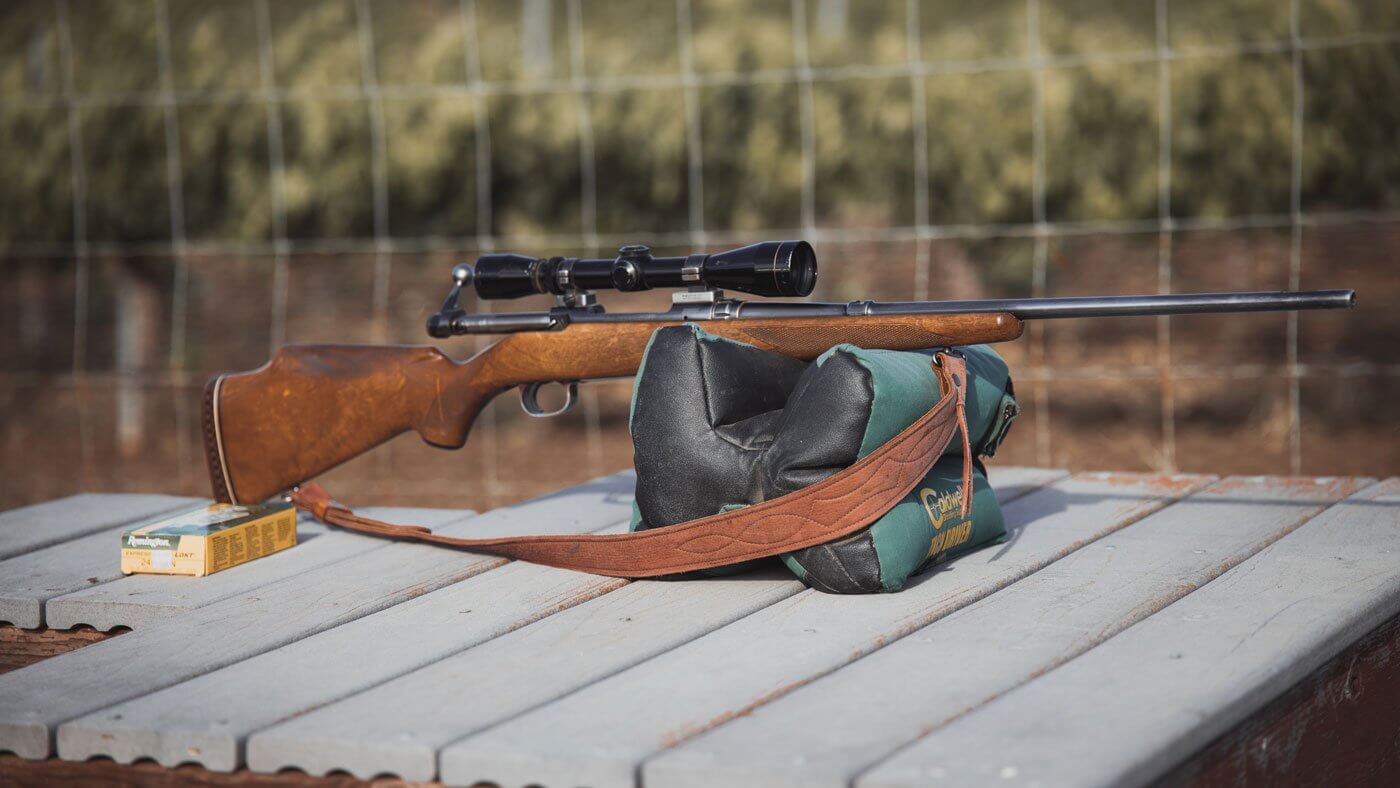
Before planting wine grapes on the family farm in 1982, Howie farmed barley on the home place plus thousands of additional acres locally while managing an ag chemical supply store and working as a pest control advisor. 100+ hour work weeks were his norm, so limited time was dedicated to hunting. However, as is the case for many farmers/ranchers and is certainly the case for me, when at work, he was never not hunting. Controlling pests on the farm is a never-ending (very enjoyable!) task. It didn’t matter if he was on a tractor, in the truck, or even in my grandma’s Lincoln Town Car, his rifle was always at the ready to dispatch crop destroying squirrels & rabbits or calf killing coyotes. Opening day of our Blacktail deer season was always an occasion, but outside that Saturday, many deer taken during our 6-week season were incidental. When an opportunity presented itself to fill the cooler, the rifle was ready. Looking back, I’m still astonished by how quickly he could deploy it. Frequently, his target was dead before I’d spotted it, and commonly before I even had a chance to plug my ears!
Hunting and shooting as part of the daily routine is an important part of the story, but if you bring up hunting around Howie, you’d better be ready to talk about Mule Deer. The 1960s & 70s were a very good time to pursue Mule Deer. For decades, every October, he and a group of uncles and friends would assemble a convoy of motorhomes, trucks, and Jeeps and head East. Over-the-counter tags were readily available, and access to areas that now take 15+ years to draw was virtually unrestricted. The list of iconic units he’s hunted in Arizona, New Mexico, and Utah is enviable, but most years, they’d head back to Blue Mesa, their favorite spot in Southwestern Colorado. With three OTC tags per person, a comfortable camping area with a meat pole that’s still intact today and a strategy they’d devised that involves, as Howie describes it, “letting the Texans in their fancy motorhomes drive the deer off the top and right to us”, they were reluctant to spend their energy anywhere else. They were primarily there for the experience and meat, so limited effort was spent searching for trophies, but you don’t spend as much time in good mule deer country as they did without coming across some giants. Howie’s personal best, a 32” wide, 212” 6x7, taken in 1973, hangs on his wall and is what I thought Mule Deer looked like growing up!
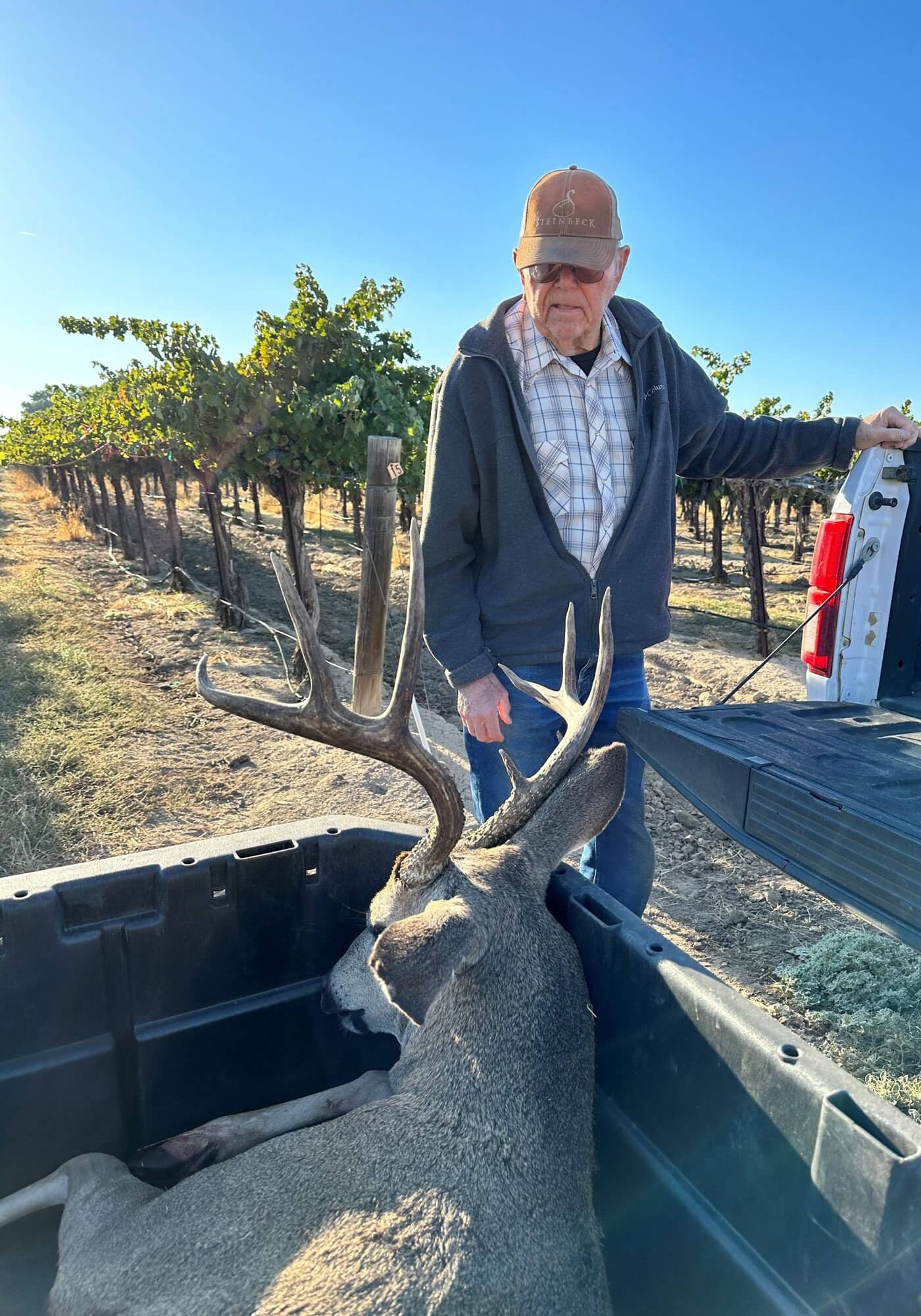
In 1960, the .243 Winchester cartridge was as modern as the 7mm PRC is to us today. Howie and his uncles, who used it for everything from squirrels to elk, didn’t have an internet full of opinions that it’s a marginal choice. They tried it, it worked, so they used it. Keep in mind that they were meat hunters with, in today’s terms, virtually unlimited opportunity. If an opportunity was missed, there would be another the following day or the following year. There was no once-in-a-lifetime thinking back then. In fact, the .243 cartridge was almost too modern for the bullets available at the time, so his uncles would load reduced velocity ammunition to avoid the occasional bullet “blow-ups” they’d observed. Kills from virtually point-blank range to over 600 yards, numbering well into the hundreds, can be attributed to Howie and his trusty 243.
The family farm was struggling in the early 1980’s so Howie and Bev decided to replace barley and cattle with wine grapes on the 160 acres they’d inherited from his grandparents. They had no idea how successful they and the entire Paso Robles region would become as a result. The downside: wine grape harvest runs from early September through early November. Combined with diminishing availability of OTC tags, the annual October hunting trip era came to an end. A now profitable farm opened new doors, though. Elk, Caribou, Whitetails, and Pronghorns offered adventure with more accommodating seasons, and an occasional late-season Mule Deer was still doable. New species in unfamiliar venues provided easy justification for a safe full of newer, more powerful rifles, some of them left-handed Savage 110s. Apart from a Savage model 10 ultralight in 6.5 Creedmoor I bought for him in 2009, it was rare for anything other than his 243 to come out of the safe.
The introduction of vineyards in our area also had an impact on our local deer population. Unintentionally, we had created the perfect habitat. In a region where +/-20 acres per deer is average, a 100-acre vineyard can easily sustain 30+ deer. With thousands of acres planted around us in the 90s and early 2000s, our Blacktail deer hunting transitioned from fun but largely incidental to a major occasion. Population numbers, antler size, and body weight all increased significantly. The resultant damage to our crops presented a challenge that, because of our passion for hunting, we were willing to manage in a way that benefited the deer, along with other wildlife, while still allowing us to produce a high-quality, profitable wine grape crop. In 2013, the opportunity to offer a few guided deer hunts on the farm presented itself. Some revenue to help offset crop damage, along with the opportunity to share our story, our passion, and our wine with a few fellow hunters every year was too good to pass up. So began a new chapter.
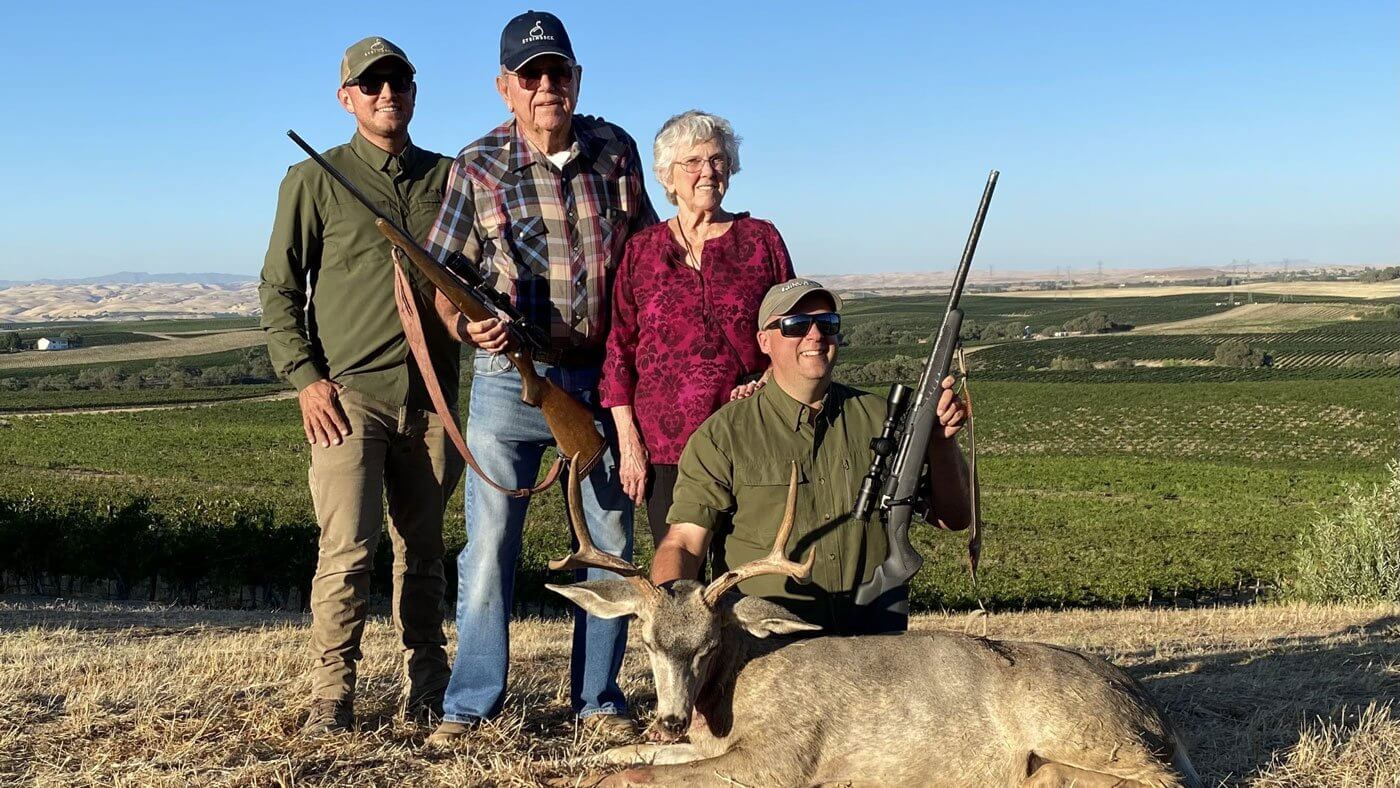
Remember the fact that Howie was primarily a meat hunter? It’s fortunate, because now that we had customers paying a premium for trophy deer hunts on the farm, our own ambitions had to take a back seat. We still hunted hard, but it’s not easy to watch a big buck walk away, opting instead for a management deer to fill the freezer and enhance future potential. In lieu of personally taking trophies, he fully embraced the ways he was able to contribute when we had hunters in camp. From hosting to BBQing, scouting to recovering down deer… and especially skinning them. His almost sixth-sense-like ability to appear at the skinning rack right when needed has become legendary. He contented himself with facilitating the success of others, enhancing their experience, and occasionally hunting a big one after everyone else had tagged out.
Some consolations, too, were the adventures we were fortunate to go on together. Not every year, but every other year, we would decide where to go next. Many options, including Africa would be discussed, and we had a couple of good pronghorn hunts, but it always came back to mule deer. Didn’t matter where… a friend’s ranch in Montana, a late-season landowners tag in New Mexico, or a pre-rut Utah tag. If mule deer was on the menu, he was in. And always with his 243.
Spring of 2023 found me in my usual routine. Managing our farming operations while trying not to get too distracted, scouting and assessing the bucks and their growing antlers. I quickly realized that we had a higher-than-usual number of mature bucks on the property. With the first group of hunters scheduled to arrive a week into season, the decision was made to rekindle the family opening day tradition, and Grandpa would be the first up. Something was telling me we needed to make this year count. The sense of foreboding that had been in the back of my mind for years, that had become more urgent recently, almost came too late.
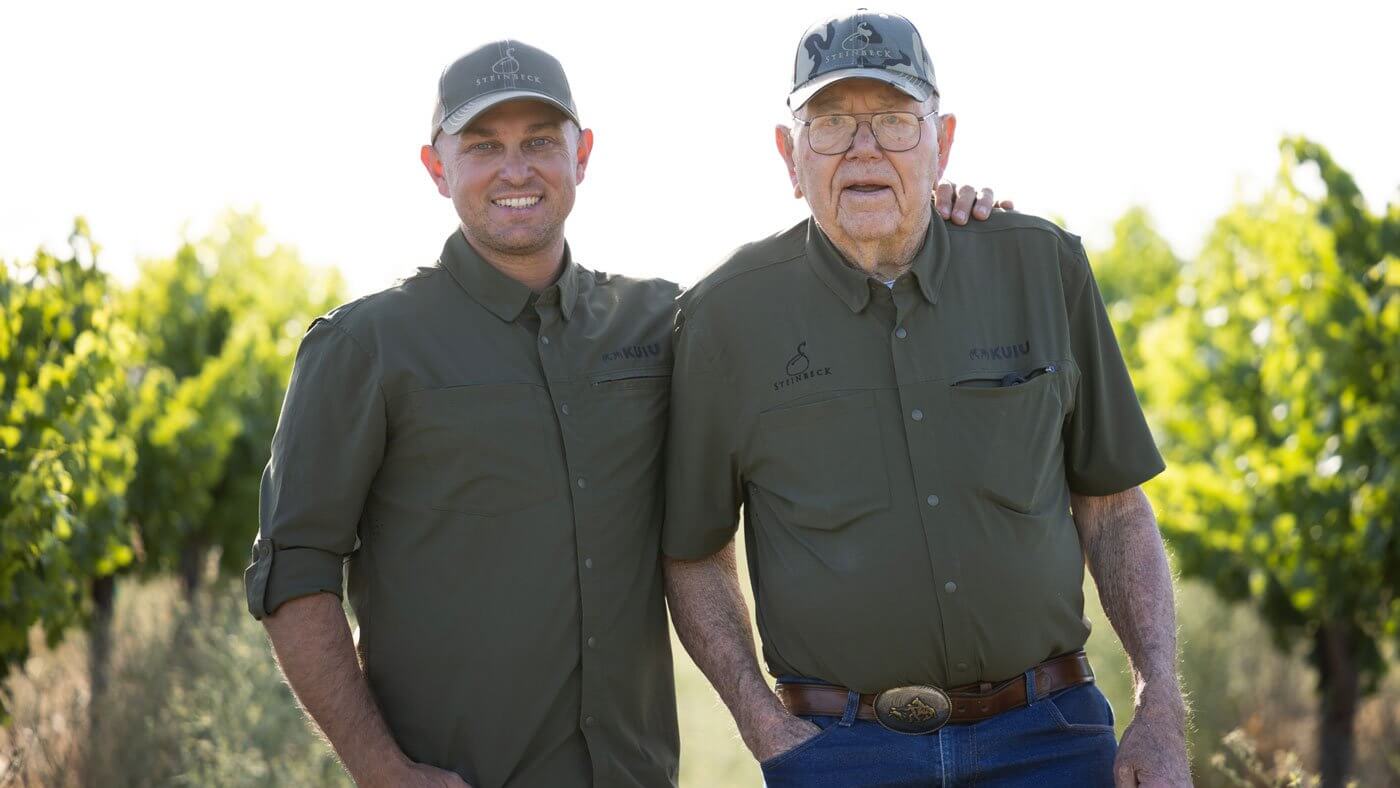
On July 16th, 2023, I got a call that Grandpa was in the hospital and a stroke was suspected. Later confirmed, a week in the hospital was followed by a month of inpatient rehabilitation. Deer season opened August 12th, so our opening day plans were thwarted. But don’t think for a second that was going to stop Howie. If you’re familiar with physical therapy programs, you know that a patient with a goal is more successful. When asked what his was, Howie responded, “I need to be able to hold my rifle. I’m going deer hunting with my grandson and great-grandson.” Probably one of the more unique responses they’d received, but his team crafted a plan accordingly. By late August, Howie was home, with limitations but still determined and optimistic. He jumped right back into the mix, still capable as ever of entertaining guests with stories about hunting, farming, and history, all while anticipating his turn.
Meanwhile, things were finally clicking for my 11-year-old son, Bradley. He had always been interested in hunting and as enthusiastic a consumer of venison as anyone I’ve encountered, but he’s struggled with the killing and cleaning aspects. This year, he was determined to push past his aversions, knowing that the following year, he would be eligible for a tag of his own. He did. He helped me take a management buck and was along for two additional successful hunts. As the end of the season approached, it was time to shift our focus to finding Grandpa, or as Bradley knows him, Papa, a wall hanger.
The hunt itself was largely unremarkable. Rut had begun, so a beautiful, heavy-horned, 3x3 buck was too distracted by a group of does to worry about us 100 yards away. A single .243 diameter bullet through the heart was just as effective as it had been hundreds of times before. An era came to an end. Tears came more easily than words as Papa handed down his rifle to Bradley as planned.
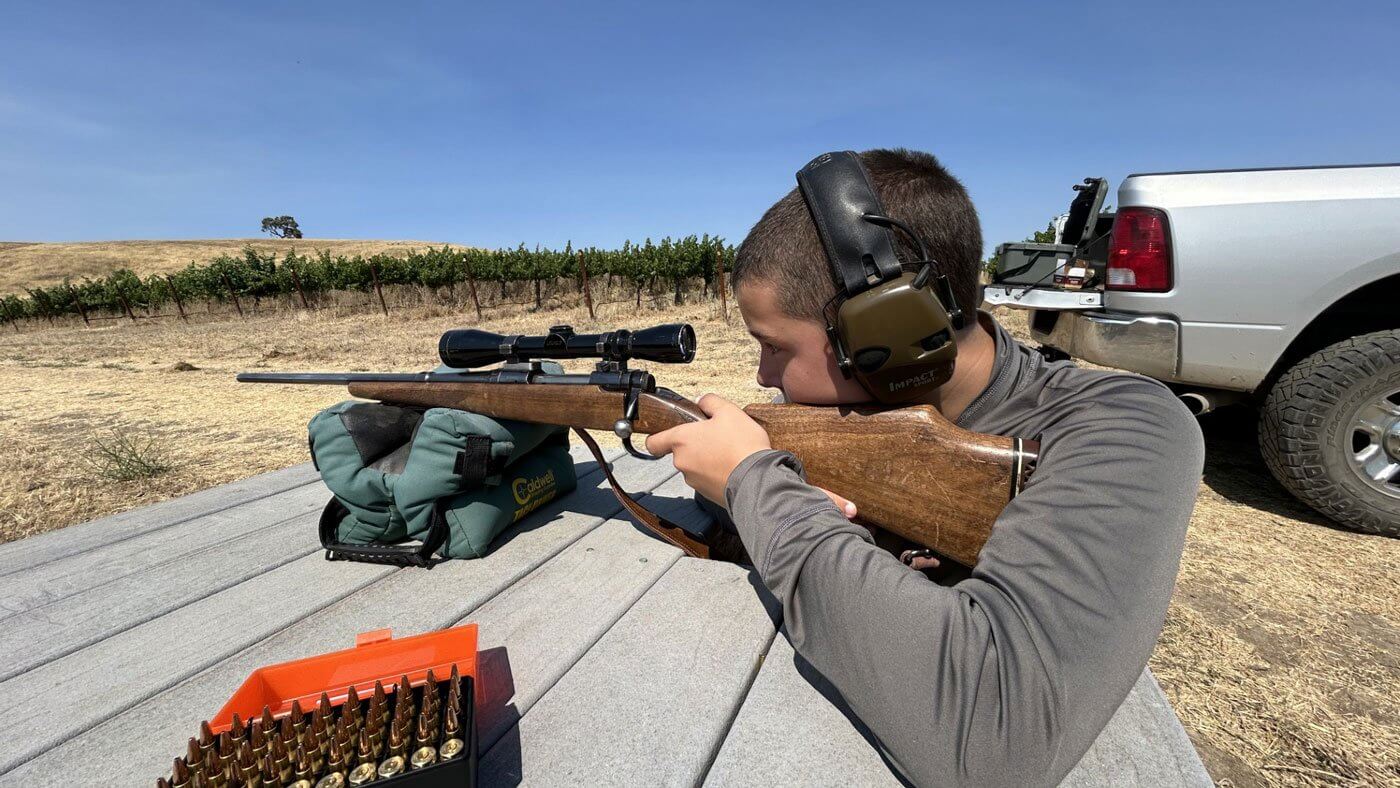
The rifle is an uncanny likeness of the man. It’s 65 years show. Most of the original bluing is gone, the stained walnut has faded to a dull tan, darker on the grip, forend, and comb where oils from his skin have deeply embedded. The gloss finish on the Leupold Vari XII scope is more iridescent purple than black now. Maintenance over the years was entirely focused on functionality, not cosmetics. The unfathomable number of hours spent with it in or at hand are reflected in the wear, but also in the glass-smooth bolt and the ease with which it shoulders and points. Like a perfectly broken-in pair of boots, resulting not from neglect, but from love.
Bradley took his first deer with his 243 in 2024 and, like my first deer with the same rifle nearly 30 years earlier, Papa was there. Papa was eager as ever to help spot and skin the nice management buck. He handled the old Savage fondly before happily passing it back to Bradley. Hopefully, there are many more opportunities to hunt with Papa in the truck, but even when he’s gone, he’ll be there. In the skills and values he has imparted, the love he’s embodied, and the legacy he’s left, all encapsulated in that one, left-handed Savage. An inanimate assemblage of metal and wood with a new hunting partner, another lifetime of memories to be made, that’s so much more than just a 243.
